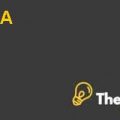
Starbucks is a global brand because it is present in more than half of the continents of the world with strong brand equity. The formation of the company is based on the global marketing strategy with a consistency in taste and quality, various retail stores, continuous market awareness and strategic alliance with suppliers. Starbucks is a company that has created diversification in a single and simplified product of coffee. The company was founded in late 80s and emerged as a global brand for coffee in the beverage industry. The company runs its existing operations in more than 49 countries of the world by having 17000 cafes at different locations on the globe (Wright, 2002, 83).
Starbucks has initially endorsed their coffee brand in the American market by acquiring the complete market research of their targeted segment. The company has never considered focusing on a particular geographic and demographic segment, in fact; Starbucks has looked to target a particular niche in the market to brand its product. The company has promoted its coffee brand with a thought of being royal. The idea presents that the luxuries life is uncommon among all human beings, but at least everyone can experience a cup of coffee with a sensation of being special. The tagline shows the promotional enthusiasm of the company by saying that Starbucks produces the finest coffee in the world. This slogan shows their global approach to target the coffee drinkers on the globe (Craig, Mehgan, Jennifer, 2012, pp. 03).
Starbucks is present in almost all continents, including Europe, Asia, North America and Australia. Starbucks re-branded its product according to the needs of their target segment. The company customizes its products based on the changing preferences of the market, they are targeting in different countries. This global appearance made by Starbucks is also the global branding strategy as the company is preparing itself to respond according to the needs of the new market. Starbucks has introduced sweet roll in Thailand because the people over there prefer coconut dishes more in the form of desserts (Dickson, 1987, 84).
The company has planned global expansion by implementing mass distribution strategy within and outside American territory. The company poses high-quality distribution channel in order to create in time availability of their brand in the consumer market. Starbucks is consistent in maintaining the quality taste of its coffee brand for a long period due to which the customers have returned to brewed coffee offered by Starbucks. Hence, in order maintain the case quality of coffee; Starbucks has re-packaged the coffee brand in an air-tight pack instead of supplying coffee beans to the retail stores which affect the taste of the product. This motility of the company is a global marketing strategy because the company is using a cane to preserve and maintain taste consistency of its branded coffee (Craig, Meghan, Jennifer, 2012, pp. 06).
Starbucks has taken measures to establish a global brand by creating worldwide awareness of their coffee brand in multiple nations of the world. Currently, the company is running a campaign to enhance their brand equity in different European countries with a tagline “Meet me at Starbucks”. The company is evaluating the want of a consumer of getting socialized with acquaintance by having a cup of coffee with them. Starbucks has launched this campaign in more than 20 countries of the world in the form of a mini-film by employing domestic move-makers. The film has shown various kinds of people who are meeting at Starbucks and experiencing a splendid inspiration of drinking coffee..................................
This is just a sample partial case solution. Please place the order on the website to order your own originally done case solution.
Founded in 1971 and acquired the general manager Howard Schultz in 1987, Starbucks was an American success story. In the forty years it has grown from a single location coffee roaster in Seattle, Washington, the global multi-billion dollar company, working in more than 17,000 retail coffee shops in fifty countries and sold coffee beans, instant coffee, tea, and ready-to-drink beverages in the tens of thousands grocery stores and mass merchandise. However, as Starbucks moved into new market within the context of its aggressive growth strategy, the assets and activities of the center of its competitive advantage in the retail coffee shops have been changed or impaired, which made it more vulnerable to competitive threats, both above and below the quality of the entrants. The company also had to take a decision on vertical integration, related to its expansion into consumer products. "Hide
by Craig Garthwaite, Meghan Busse, Jennifer Brown, Greg Merkley Source: Kellogg School Management 20 pages. Publication Date: July 13, 2012. Prod. #: KEL665-PDF-ENG











